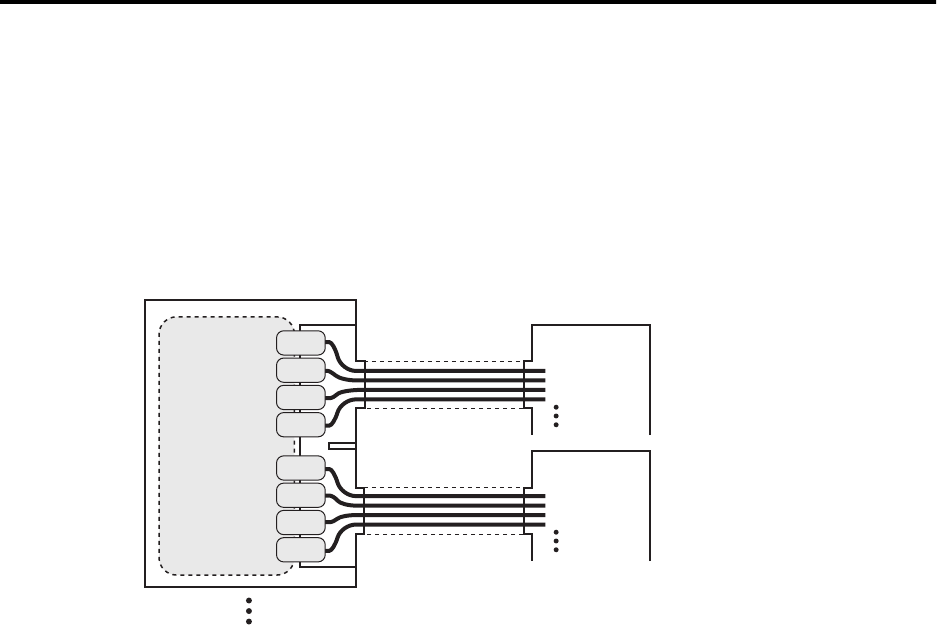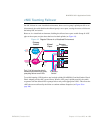
BMD00220, October 2010 153
CHAPTER 12
Virtual NICs
A Network Interface Controller (NIC) is a component within a server that allows the server to be
connected to a network. The NIC provides the physical point of connection, as well as internal
software for encoding and decoding network packets.
Virtualizing the NIC helps to resolve issues caused by limited NIC slot availability. By virtualizing
a 10Gbps NIC, its resources can be divided into multiple logical instances known as virtual NICs
(vNICs), Each vNIC appear as a regular, independent NIC to the server operating system or a
hypervisor, with each vNIC using some portion of the physical NIC’s overall bandwidth.
Figure 17 Virtualizing the NIC for Multiple Virtual Pipes on Each Link
A G8124 with BLADEOS 6.5 supports the Emulex Virtual Fabric Adapter (VFA) to provide the
following vNIC features:
Up to four vNICs are supported on each server port.
vNICs can be grouped together, along with regular server ports, uplink ports, or trunk groups,
to define vNIC groups for enforcing communication boundaries.
In the case of a failure on the uplink ports associated with a vNIC group, the switch can signal
affected vNICs for failover while permitting other vNICs to continue operation.
NIC
OS or
Hypervisor
Server
Switch 1
Switch 2
10 Gbps Link with
Multiple Virtual Pipes
VNIC
VNIC
VNIC
VNIC
VNIC
VNIC
VNIC
VNIC
Physical
NIC Ports
Switch
Ports


















